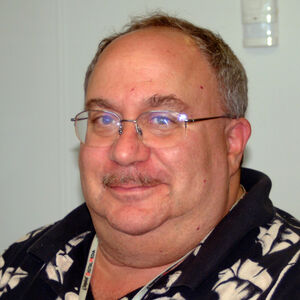Richard Schwartz
From RHESSI Wiki
| Nugget | |
|---|---|
| Number: | 399 |
| 1st Author: | Brian DENNIS |
| 2nd Author: | Hugh HUDSON |
| Published: | 18 January 2021 |
| Next Nugget: | Solar FRB |
| Previous Nugget: | Observing Solar Flare X-ray Polarization with Prospective CubeSat Missions |
| List all | |
Contents |
Introduction
Our friend and colleague Richard A. Schwartz passed away unexpectedly at his home on Saturday, 12 December 2020, and all of the RHESSI extended team will remember him vividly. Please visit his memorial page and join his family and other friends there. An obituary notice has appeared at SolarNews, January 1, 2021. This Nugget will mainly reflect on his scientific life and work.
Early career: Berkeley
Richard did his PhD studies in Physics at the University of California, Berkeley, with research carried out at the Space Sciences Laboratory in the group of Kinsey Anderson and Bob Lin. Richard's time as a graduate student was one of great success for the group, based on a remarkable balloon-borne observation of the flare SOL1980-06-27 (M6). The instrumentation included a Ge high-resolution hard X-ray spectrometer, and a 300 cm2 low-background phoswich scintillation counter.
This very successful balloon flight produced data that Richard helped to analyze: the major discoveries resulting from early Ge spectroscopy ("Superhot" emission, Ref. [1]) and sensitive large-area detectors (hard X-ray microflares, Ref. [2]). Graduate work in Berkeley, with its famous "gourmet ghetto", may have inspired Richard's long love affair with good food.
SMM and RHESSI: Goddard
After a couple of years' postodoctoral work at JPL, Richard settled down at NASA Goddard and joined Ken Frost's X-ray group working on the solar flare data from the Hard X-ray Burst Spectrometer (HXRBS) on the [1] Solar Maximum Mission. Becoming involved in the analysis of data from almost every space mission that has made high-energy solar flare observations, he gravitated towards the practical side of these investigations as he specialized more and more in scientific software development. His biggest role was as the scientist responsible for our RHESSI data analysis software. He had begun playing a similar role for the Spectrometer/Telescope for Imaging X-rays (STIX) on the recently-launched Solar Orbiter.
Farewell
Richard's main skill was the ability to combine scientific understanding with efficient computational techniques. Richard's problem-solving capabilities, prodigious memory, insightful but often acerbic wit, and imposing presence will be sorely missed by his many friends at Goddard and around the world in the international high-energy solar physics community. In particular most of his visitors at Goddard will miss his enthusiastic and adventurous dinner expeditions.
References
[1] "A new component of hard X-rays in solar flares"
[2] "Solar hard X-ray microflares"
| RHESSI Nugget Date | 18 January 2021 + |
| RHESSI Nugget First Author | Brian DENNIS + |
| RHESSI Nugget Index | 399 + |
| RHESSI Nugget Second Author | Hugh HUDSON + |
